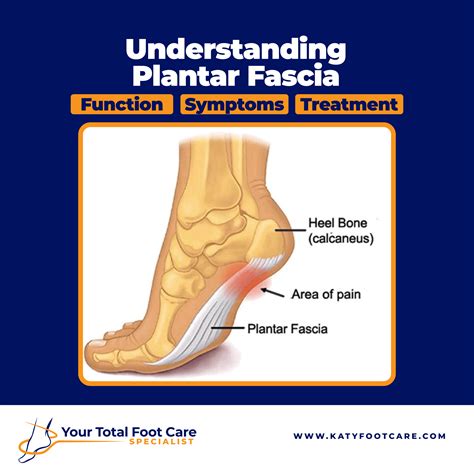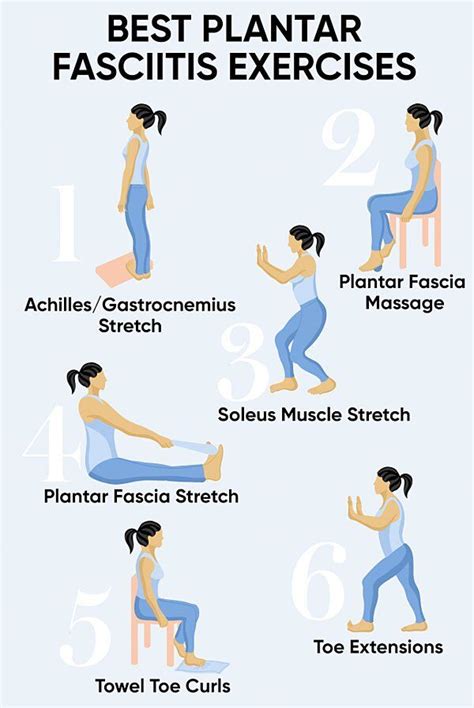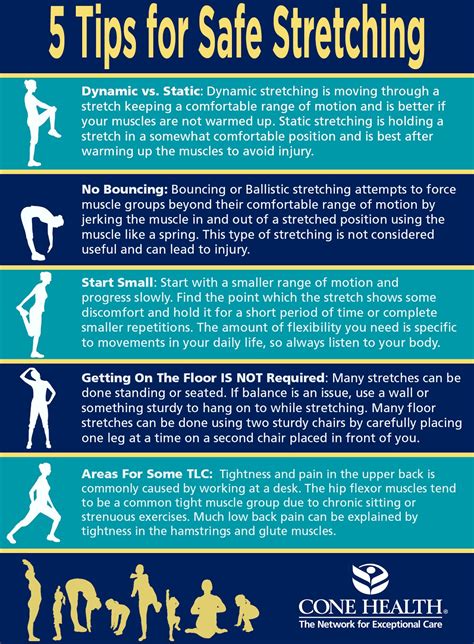Intro
Relieve heel pain with 5 effective Plantar Fasciitis Stretches, including calf, ankle, and toe stretches, to reduce inflammation and improve foot flexibility, promoting faster recovery from plantar fascia strain and Achilles tendonitis.
Plantar fasciitis is a common condition that affects the heel and bottom of the foot, causing pain and discomfort. It occurs when the plantar fascia, a band of tissue that supports the arch of the foot, becomes inflamed or irritated. This condition can be caused by a variety of factors, including overuse, poor foot mechanics, and inadequate footwear. One of the most effective ways to manage and prevent plantar fasciitis is through stretching exercises. In this article, we will explore five essential plantar fasciitis stretches that can help alleviate pain and improve foot health.
The importance of stretching for plantar fasciitis cannot be overstated. Stretching helps to reduce tension in the plantar fascia, improve flexibility, and promote healing. By incorporating these stretches into your daily routine, you can reduce your risk of developing plantar fasciitis and improve your overall foot health. Whether you're an athlete or simply someone who spends a lot of time on their feet, these stretches can help you maintain healthy, pain-free feet.
Plantar fasciitis stretches are easy to do and can be incorporated into your daily routine. They can be done at home, in the office, or even while traveling. By taking just a few minutes each day to stretch your feet, you can make a significant difference in your overall foot health. In addition to stretching, it's also important to wear supportive shoes, maintain a healthy weight, and avoid activities that aggravate the condition. By combining these strategies, you can effectively manage and prevent plantar fasciitis.
Understanding Plantar Fasciitis

Causes and Risk Factors
Plantar fasciitis can be caused by a variety of factors, including: * Overuse or repetitive strain on the plantar fascia * Poor foot mechanics, such as flat feet or high arches * Inadequate footwear, such as shoes that are too tight or don't provide enough support * Obesity or sudden weight gain * Age, as plantar fasciitis is more common in people over 405 Essential Plantar Fasciitis Stretches

Stretch 1: Toe Stretch
The toe stretch is a simple yet effective stretch for plantar fasciitis. To do this stretch: 1. Sit on the floor with your legs straight out in front of you. 2. Loop a towel around the ball of your foot and gently pull your toes back towards your shin. 3. Hold for 15-30 seconds and repeat 3-5 times.Stretch 2: Heel Stretch
The heel stretch is another essential stretch for plantar fasciitis. To do this stretch: 1. Stand facing a wall with your feet shoulder-width apart. 2. Step one foot back about a foot and a half, keeping your heel on the ground. 3. Slowly bend your front knee, keeping your back leg straight, until you feel a stretch in your heel and Achilles tendon. 4. Hold for 15-30 seconds and repeat 3-5 times on each side.Stretch 3: Calf Stretch
The calf stretch is a great way to reduce tension in the plantar fascia. To do this stretch: 1. Stand facing a wall with your feet shoulder-width apart. 2. Step one foot back about a foot and a half, keeping your heel on the ground. 3. Slowly bend your front knee, keeping your back leg straight, until you feel a stretch in your calf muscle. 4. Hold for 15-30 seconds and repeat 3-5 times on each side.Stretch 4: Foot Roll
The foot roll is a simple yet effective stretch for plantar fasciitis. To do this stretch: 1. Sit on the floor with your legs straight out in front of you. 2. Place a tennis ball or rolling pin under the arch of your foot. 3. Slowly roll the ball or rolling pin back and forth, applying gentle pressure to the plantar fascia. 4. Repeat for 3-5 minutes, taking breaks as needed.Stretch 5: Ankle Circle
The ankle circle is a great way to improve flexibility and reduce tension in the plantar fascia. To do this stretch: 1. Sit on the floor with your legs straight out in front of you. 2. Lift your foot off the ground and draw circles with your ankle, starting from small circles and gradually increasing in size. 3. Repeat for 3-5 minutes, taking breaks as needed.Tips for Stretching

Common Mistakes to Avoid
When stretching for plantar fasciitis, there are a few common mistakes to avoid. These include: * Stretching too aggressively, which can cause further injury * Not stretching regularly, which can reduce the effectiveness of the stretches * Not warming up before stretching, which can reduce flexibility and increase the risk of injuryAdditional Treatment Options

When to Seek Medical Attention
While stretching and other conservative treatments can be effective for managing plantar fasciitis, there are times when medical attention is necessary. These include: * Severe pain or swelling in the foot or ankle * Difficulty walking or bearing weight on the affected foot * Fever or redness in the affected area * A sudden increase in pain or symptomsConclusion and Next Steps

We hope this article has been informative and helpful in your journey to manage and prevent plantar fasciitis. If you have any questions or comments, please don't hesitate to reach out. Share this article with friends and family who may be experiencing similar issues, and take the first step towards healthy, pain-free feet.
What is plantar fasciitis?
+Plantar fasciitis is a common condition that affects the heel and bottom of the foot, causing pain and discomfort. It occurs when the plantar fascia, a band of tissue that supports the arch of the foot, becomes inflamed or irritated.
What are the symptoms of plantar fasciitis?
+The symptoms of plantar fasciitis include pain and stiffness in the heel and bottom of the foot, especially after rest or activity. The pain may be sharp or dull and can be accompanied by swelling or redness in the affected area.
How can I prevent plantar fasciitis?
+Plantar fasciitis can be prevented by wearing supportive shoes, maintaining a healthy weight, and avoiding activities that aggravate the condition. Regular stretching and exercise can also help reduce the risk of developing plantar fasciitis.
What are the best stretches for plantar fasciitis?
+The best stretches for plantar fasciitis include the toe stretch, heel stretch, calf stretch, foot roll, and ankle circle. These stretches can help reduce tension in the plantar fascia and promote healing.
When should I seek medical attention for plantar fasciitis?
+Medical attention should be sought if you experience severe pain or swelling in the foot or ankle, difficulty walking or bearing weight on the affected foot, fever or redness in the affected area, or a sudden increase in pain or symptoms.
